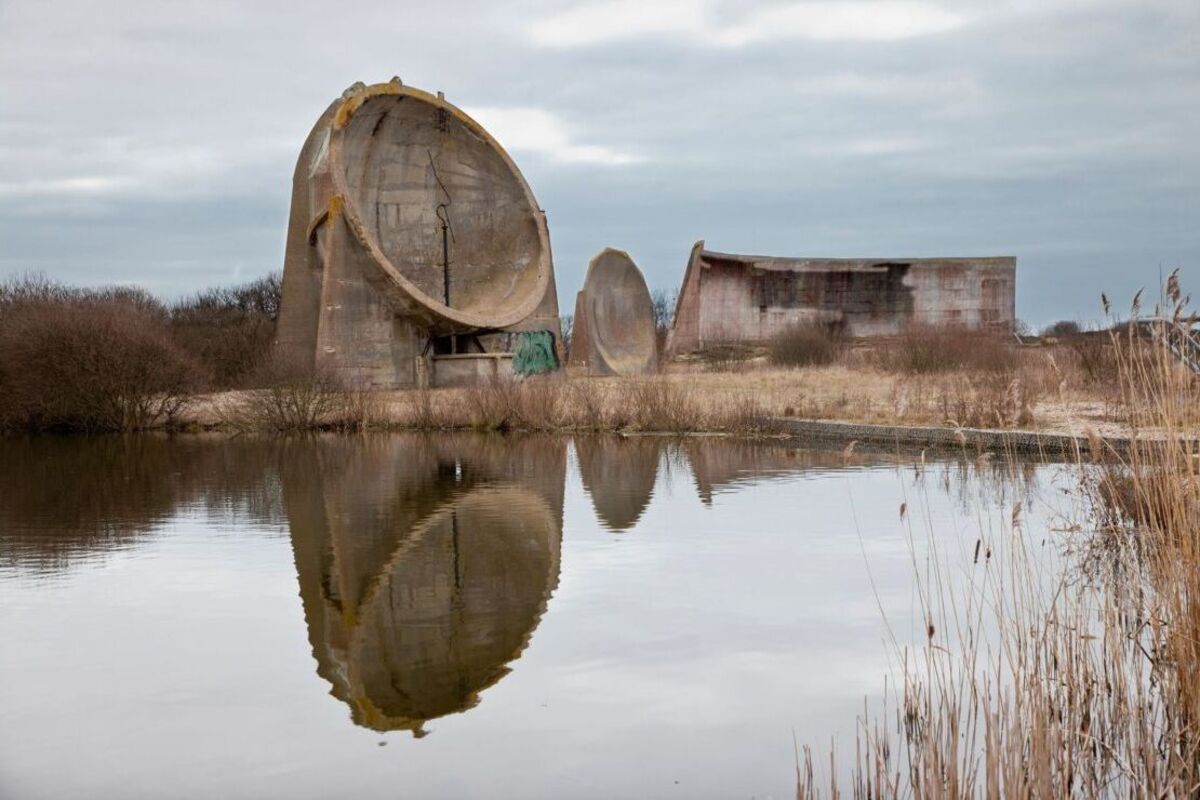Secret Acoustic Mirrors Of World War II

Have you ever heard of the acoustic mirrors from World War II? These massive concrete structures, scattered along the coast of England, were early warning systems designed to detect incoming enemy aircraft. Before radar technology, these mirrors played a crucial role in national defense. They worked by reflecting sound waves from aircraft engines, allowing operators to hear approaching planes from miles away. Today, these relics stand as silent witnesses to a bygone era, offering a unique glimpse into the ingenuity of wartime technology. Visiting these sites can be a fascinating experience, blending history, science, and a touch of mystery.
Secret Acoustic Mirrors of World War II
During World War II, before radar became widespread, acoustic mirrors served as an early warning system against enemy aircraft. These massive concrete structures, often resembling giant ears, captured sound waves from approaching planes, giving precious minutes of warning. Today, these relics stand as silent witnesses to a bygone era. Let's explore some of the most intriguing acoustic mirrors still standing.
1. Denge, England
Located on the Dungeness peninsula in Kent, the Denge mirrors are among the most well-preserved examples. These structures include three different types of mirrors: a 20-foot disc, a 30-foot disc, and a 200-foot curved wall. Each design aimed to improve the detection range and accuracy. The eerie, desolate landscape adds to the mirrors' mystique, making it a fascinating visit for history buffs.
2. Kilnsea, England
Near the village of Kilnsea in East Yorkshire, another acoustic mirror stands. This 15-foot concave dish was part of a network designed to protect the Humber estuary. Though partially eroded by time and weather, it remains a poignant reminder of the early days of aerial warfare. The surrounding area, rich in wildlife, offers a peaceful contrast to the mirror's wartime origins.
3. Hythe, England
Hythe in Kent hosts a 20-foot acoustic mirror, one of the earliest built in the 1920s. This mirror was part of an experimental phase to test the feasibility of sound detection. Situated near the Royal Military Canal, it provides a unique glimpse into the technological advancements of the interwar period. The nearby canal path offers a scenic walk, blending history with nature.
4. Boulby, England
On the cliffs of Boulby in North Yorkshire, a lesser-known acoustic mirror overlooks the North Sea. This 15-foot structure was strategically placed to monitor enemy aircraft approaching from the east. Its remote location makes it less visited, offering a more intimate experience for those willing to trek to see it. The rugged coastline adds to the sense of isolation and historical significance.
5. Redcar, England
Redcar, also in North Yorkshire, features a 20-foot acoustic mirror that once guarded the Tees estuary. This mirror is unique due to its proximity to urban areas, providing a stark contrast between modern life and historical relics. The nearby beach and promenade make it an accessible and interesting stop for visitors exploring the region.
6. Selsey, England
Selsey in West Sussex is home to a 30-foot acoustic mirror, one of the largest still standing. This mirror was part of a broader network protecting the southern coast of England. Its size and design reflect the advancements in acoustic technology during the late 1930s. The surrounding area, known for its natural beauty, offers a picturesque setting for this historical artifact.
7. Malta
Malta, a strategic location during World War II, also features an acoustic mirror. This 15-foot structure was crucial for early warning against Axis aircraft. Though less known than its British counterparts, it played a vital role in the island's defense. The Mediterranean backdrop provides a stunning contrast to the mirror's utilitarian purpose.
8. Calais, France
Across the English Channel, Calais in France hosts an acoustic mirror similar to those in England. This 20-foot structure was part of the coastal defenses against British aircraft. Its presence highlights the widespread use of this technology during the war. The mirror, set against the backdrop of the French coastline, offers a unique perspective on wartime innovations.
9. Cherbourg, France
Cherbourg in Normandy features another acoustic mirror, designed to protect the vital port city. This 15-foot structure, though weathered, stands as a testament to the ingenuity of wartime engineers. The nearby maritime museum provides additional context, making it a worthwhile visit for those interested in naval history.
10. Zeebrugge, Belgium
Zeebrugge in Belgium, a key naval base during both World Wars, also utilized acoustic mirrors. The 20-foot mirror here was part of the coastal defenses against Allied aircraft. Its strategic location underscores the importance of sound detection technology in wartime. The bustling port and historical sites nearby offer a rich tapestry of history and modernity.
Hidden Gems of History
The acoustic mirrors of World War II offer a fascinating glimpse into early military technology. These massive concrete structures, designed to detect incoming enemy aircraft, stand as a testament to human ingenuity. Though radar technology eventually replaced them, these mirrors still hold historical significance. Visiting these sites provides a unique opportunity to connect with the past and appreciate the efforts made to protect nations during wartime.
Exploring these relics can be a rewarding experience for history buffs and curious travelers alike. They serve as a reminder of the challenges faced and the innovative solutions developed during a critical time in history. Next time you plan a trip, consider adding these hidden gems to your itinerary. You might find yourself standing in awe of the engineering marvels that once played a crucial role in national defense.

